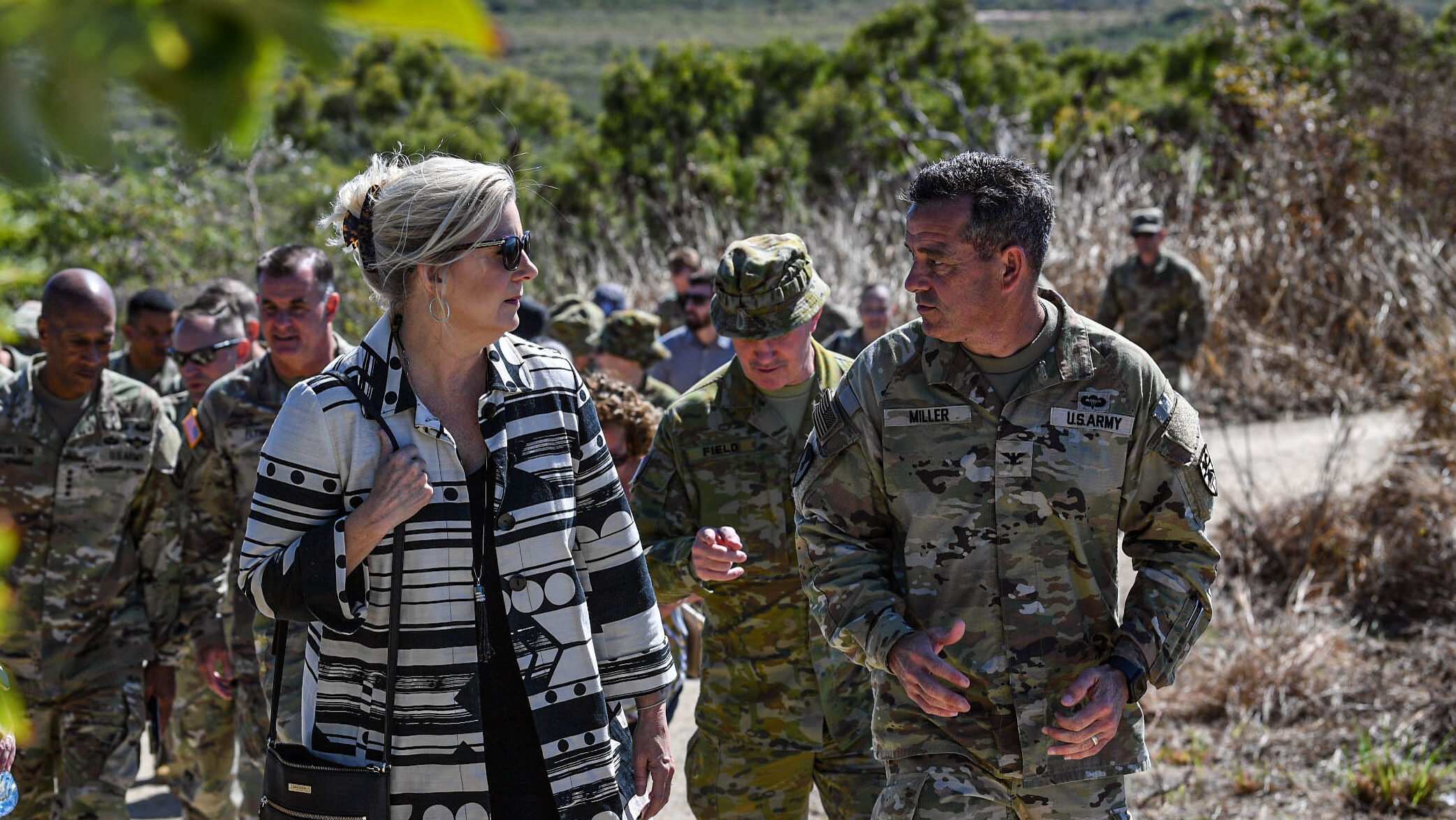
Army Secretary Christine Wormuth Col. Samuel Miller, commander of the 7th Transportation Brigade, talk logistics during Exercise Talisman Sabre 2023. (US Army/Sgt. David Resnick)
AUSA 2023 — Army Secretary Christine Wormuth and Chief Gen. Randy George are planning to brief lawmakers on force structure changes prompted, in part, by recruiting woes and the pivot towards large-scale operations.
Ahead of next week’s Association of the United States Army conference in Washington, DC, the duo unveiled fiscal 2023 recruiting data today. When FY23 ended on Sept 30, the service met its end-strength of goal of 452,000 for active-duty soldiers thanks to stronger retention numbers. However, it was 10,000 recruits shy of its 65,000 “stretch goal” and from that 55,000 total, only about 4,600 people will ship out in FY24 as part of the delayed entry program.
While hitting that end-strength target is a plus for the Army, the active-duty force remains smaller than the 485,000 soldiers it had several years ago, and Wormuth and George are not banking on a quick bounce back to those figures. As such, they have been working on a people “night court” of sorts to decide how to make the most efficient use of the personnel available, and lawmakers are about to see that plan in the “very near future,” Wormuth said.
Until then, both leaders are remaining tight-lipped about specifics but offered a peek at what’s coming. For example, part of that plan involves cutting out “over structure” at bases around the country — essentially removing vacant seats due to end strength reductions. They are also looking at the right mix of military occupational specialty numbers inside units.
“The Army is in a moment of transformation where we are really pivoting from [counterinsurgency] COIN and [counterterrorism] CT to large-scale combat operations: So, we’ve got to transform our force structure,” Wormuth said.
“There are new capabilities that we need to bring into the force,” she later added. “So, that is the transformation of the force structure that we have been working on.”
RELATED: The ‘morale challenge’ facing some special operators in the era of Great Power competition
That pivot also means a cut to the number of Army special forces, one group that grew over the past two decades due to the ballooning of demand for counter-terrorism and anti-insurgent capabilities, Wormuth confirmed.
“There’s some room to make some very modest targeted reductions there,” she added, while also noting that senior service leaders have been working with Special Operations Command and other stakeholders on the plan.
George, for his part, did not dive into possible force structure changes today, but just last month at a Maneuver Warfighter Conference, he said an evolution was afoot and that input from all four-star commanders and sergeant majors will be taken into account.
Any looming changes could emerge as a focal point during next week’s Army conference, so too could service plans to boost recruiting numbers.
As for changing how it recruits, that roadmap remains fluid, but Wormuth and George unveiled a handful of initiatives, including plans to expand the prospect market by targeting more youth with some college experience, creating new recruiting military occupational specialties, and putting a three-star general in charge of the Army Recruiting Command for a four-year stint.






